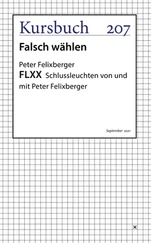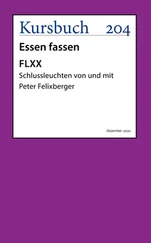Weston, who’d been biding his time, objected. He’d managed to find a clean suit and tie for the trip to the White House, even a set of cufflinks. He launched into an attack on the whole field of paleoseismology. He wasn’t alone in his argument. Several of the USGS scientists were also leery of basing seismic projections on the physical evidence of past quakes. There were simply too many exceptions, too many gaps in the chain, too many inconsistencies.
“At best it’s interesting data that needs more interpretation,” one of them said. “It would be a mistake to use it now to try to project for future earthquakes, especially under present circumstances.”
Atkins had expected their objections, which echoed Weston’s. He had a serious problem with Weston over the cracks at Kentucky Dam, a problem they still needed to resolve. But he understood that Weston expressed what most of the seismologists working on the crisis were thinking. Weston had been an effective spokesman for their viewpoints. Argumentative and opinionated, he had history on his side. Back-to-back earthquakes of magnitude 8 or greater were incredibly rare.
Holleran let the remark pass without comment. She knew she had the support of most of the seismologists in the room. But on another level, she no longer cared what others thought. Her job, as she understood it, was to examine the physical evidence and try to draw meaningful conclusions while keeping speculation to a minimum. She’d done just that. The evidence was rich. The clues, buried deep in the ground, told them a great deal about the area’s violent seismic history.
Walt Jacobs had information to report—if not as dramatic, equally as troubling.
The man looked awful, Atkins thought. The bags under his eyes were dark and puffy. He hadn’t shaved or changed clothes in days. Atkins noticed his old friend was still wearing the rumpled blue denim shirt he’d had on two days earlier. He resolved to talk to him, see if he could help him pull out of it.
“The latest GPS sweep shows continued deformation along a line running roughly northeast of the Caruthersville Fault about two hundred miles into Kentucky.”
The satellite data had just been harvested by the GPS Master Control Station near Colorado Springs. It had been analyzed and enhanced at the Jet Propulsion Laboratory at Cal Tech before it was relayed by satellite to Memphis. The data was projected on a map.
“How much uplift are we getting?” Weston asked. Like the others, he was seeing the data for the first time. Thompson had only recently processed it.
“Twenty inches along most of the fault. A little more than that at the point of axis with the main New Madrid segment. It’s roughly thirty inches there.”
Even Ross knew enough geology by then to realize an uplift of that magnitude was serious, an unmistakable signal that tremendous amounts of seismic energy continued to build along the fault lines.
Jacobs had another satellite-generated detail to add to the analytical mix.
Earthquakes were known to produce strong energy currents or pressure waves in the earth’s upper atmosphere, the ionosphere. This connection had been first noticed after the Northridge quake of 1994.
Jacobs said, “We saw then that for two days before the earthquake, the GPS 10-3mn frequency band began to pick up a train of strong pressure waves. The waves were generated by a change in electrons. The greatest waves appeared within minutes after the first strong tremors.”
“What’s your point?” snapped the president, exasperated by the unrelenting complexity of the science.
“We’re starting to see some significant electronic disturbances in the atmosphere at distances of five hundred to six hundred kilometers above the fault line,” Jacobs said. “The waves are intensifying in strength.”
Guy Thompson hadn’t changed his Western look for the visit to the White House. He wore his usual attire—jeans, expensive cowboy boots, and a gaudy Western shirt. He’d braided his black hair in the back.
“I’d like to talk about the P velocity data.” Thompson explained that the velocities of the P waves had dropped by about 10 percent since that magnitude 8.4 event. “In the last twenty-four hours those velocities have started climbing again,” he said.
Ross asked him to explain.
“The theory was developed from observations in Russia,” Thompson said. “It holds that P velocities decrease after a precursor quake, then start to return to more normal levels just before a major event.”
“That’s only a theory,” Weston said, making no effort to conceal his anger. His view was shared by several others.
“I want to hear this,” Ross said, silencing Weston.
Thompson explained that his team had prepared a map of the entire seismic zone based on geomagnetic data gathered by satellite. Shifts in magnetic fields were recognized indicators of seismic activity. The recent readings showed a major change in the zone’s magnetic field.
On Thompson’s map, projected on the screen, areas of high magnetic intensity showed up as hills. Low intensity as valleys. The hills, which were colored red, dominated the image.
Atkins was interested in these geomagnetic readings. He continued to wonder whether magnetic fields were responsible for the strange, green glow that had shimmered deep in Kentucky Lake.
There was another possible source. All that fracturing of the rock deep in the ground generated heat. The role of heat in earthquakes was little understood. Some laboratory experiments had demonstrated that rocks would melt under the extreme pressures of a major earthquake. Other tests showed this didn’t always happen. Scientists were nowhere near an explanation of the heat dilemma.
Atkins wondered if New Madrid was showing a phenomenon never seen before in earthquake country—the visible discharge of tremendous amounts of heat up through the crust. An action that was almost volcanic in power.
Ross interrupted Atkins’ train of thought. The president asked his national security adviser for a damage assessment.
Margaret Greenland stood and smoothed the hem of her rumpled skirt. She was a heavyset woman who didn’t care much about her appearance. She’d received her doctorate from the University of Chicago. Her rise through the ranks of the Central Intelligence Agency was the result of talent, grit, and hard work. Ross liked and respected her.
“This is based on our most recent damage assessments,” she said, switching off the room’s overhead lights. “We’ll start first with cities on the periphery of the damage zone.”
She began with footage of Chicago. The towering skyline was unmistakable.
“That’s Lake Shore Drive,” Greenland said with her slow, Southern drawl. “Most of the buildings along the Magnificent Mile sustained moderate damage. Every aftershock sends more glass falling down on the streets.” Some of the shards were found embedded like daggers in the walls of buildings.
“Pittsburgh and Philadelphia have also reported damage,” Greenland said. “Some underground pipes have snapped.”
A map on the wall showed the Mercalli damage zones rippling out from the epicenter like rings on a bull’s-eye. The Modified Mercalli Intensity Scale ranked earthquakes on the basis of observed physical destruction.
The film switched to Columbus, Ohio—the area around the State Fair Grounds and German Village. Both had been hard hit.
Greenland followed with photos of the collapsed Hoosier Dome and the devastated White River Park district in Indianapolis. Both cities were closer to the epicenter. The images were always the same. Buildings in various stages of collapse, the flashing lights of emergency vehicles, crowds of people with dazed, shell-shocked expressions, weeping children.
Читать дальше












